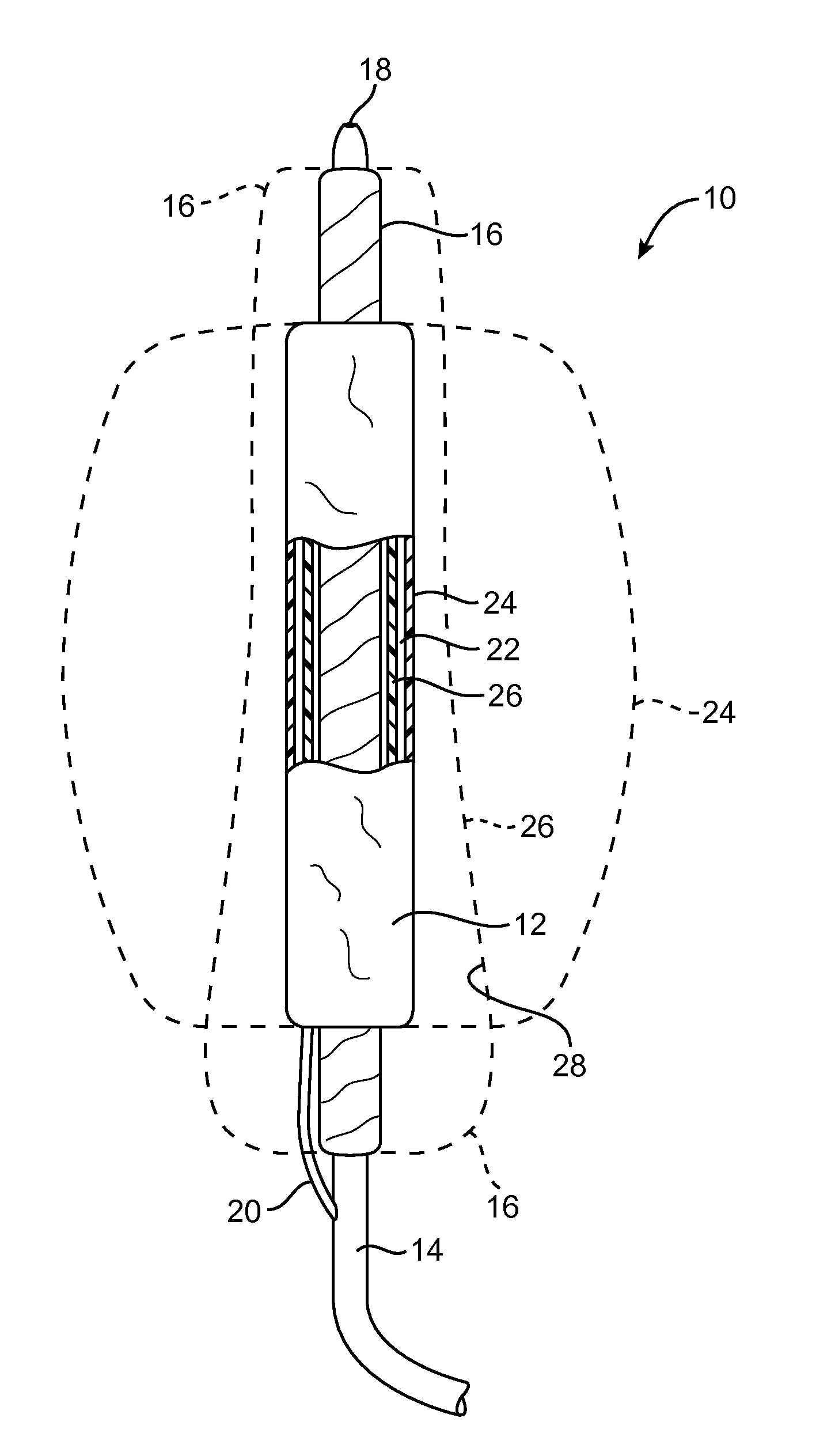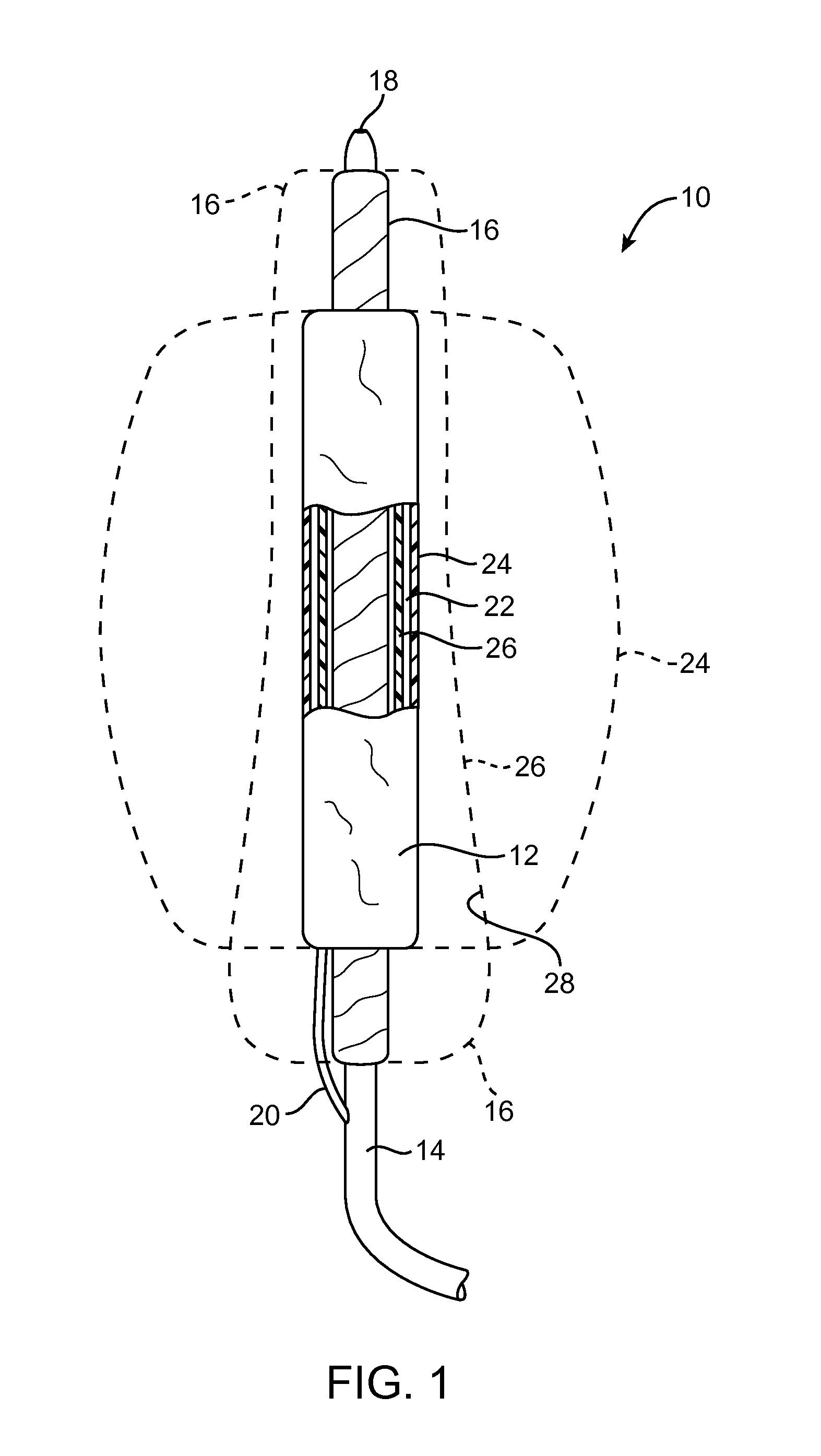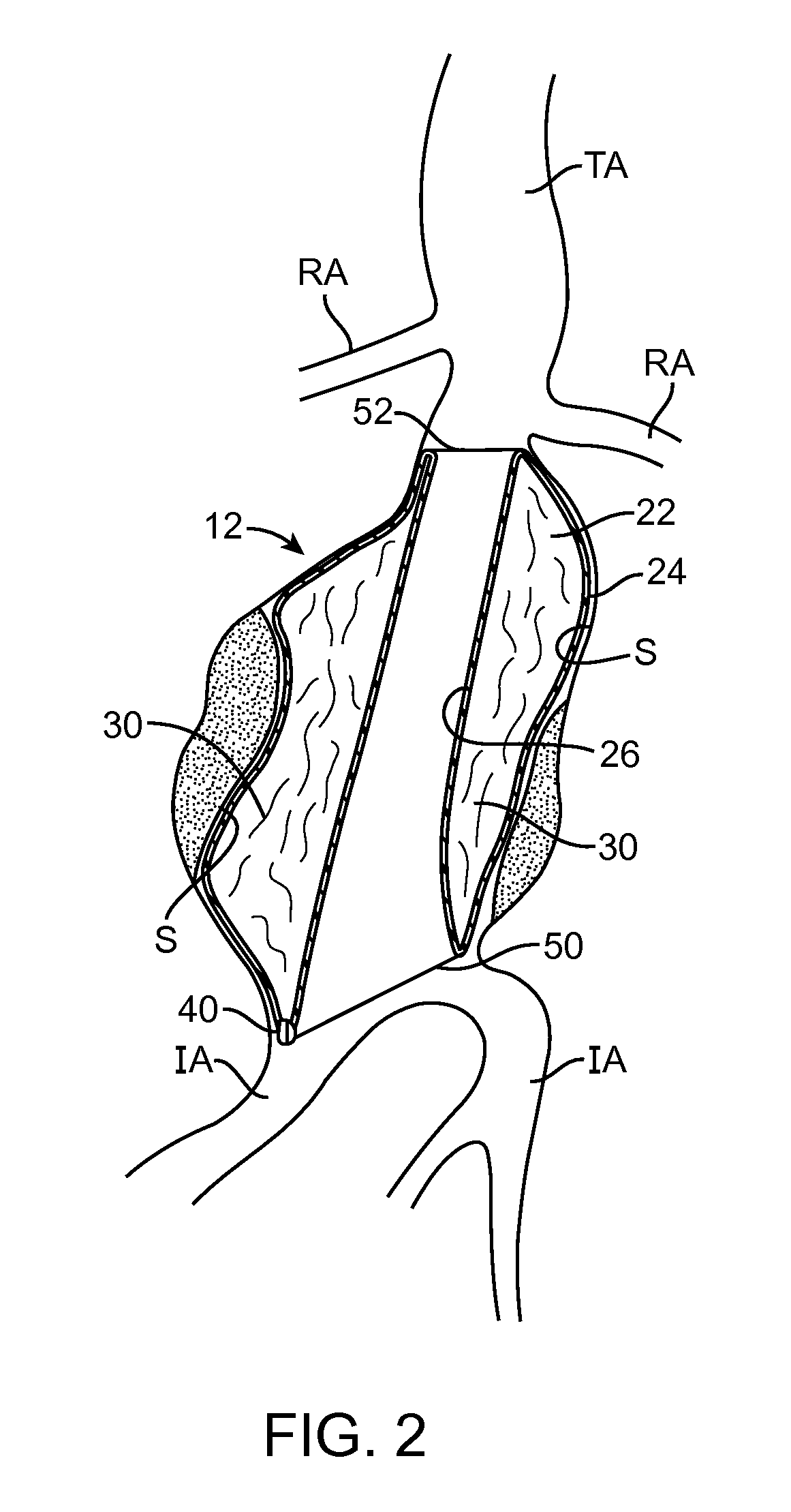Graft Systems Having Semi-Permeable Filling Structures and Methods for Their Use
a semi-permeable, filling structure technology, applied in the field of expandable prosthesis, can solve problems such as shrinkage of filling structure, and achieve the effects of increasing the total filling capacity of filling structure, adequate sealing, and increasing the available spa
- Summary
- Abstract
- Description
- Claims
- Application Information
AI Technical Summary
Benefits of technology
Problems solved by technology
Method used
Image
Examples
Embodiment Construction
[0043]Embodiments described relate to an aneurysm treatment system comprising a filling structure having a fillable space and a membrane that uses a water transport mechanisms, such as an osmosis process, to adjust the volume of fluid in the fillable space of the filling structure deployed in the aneurysm. By allowing the volume of a fillable space of the filling structure to increase (or decrease) through transport of a fluid through the membrane, such as by diffusion of water vapor through the membrane, the system may accommodate changes in the size or shape of the aneurysm over time. In a preferred embodiment, the water transport occurs through osmosis. In osmosis, which is sometimes referred to as “forward osmosis,” a semi-permeable membrane is used to attract substantially pure water into a solution with a relatively high osmotic pressure from a solution having a relatively low osmotic pressure. In one embodiment, the fillable space of the filling structure is filled with a sol...
PUM
 Login to View More
Login to View More Abstract
Description
Claims
Application Information
 Login to View More
Login to View More - R&D
- Intellectual Property
- Life Sciences
- Materials
- Tech Scout
- Unparalleled Data Quality
- Higher Quality Content
- 60% Fewer Hallucinations
Browse by: Latest US Patents, China's latest patents, Technical Efficacy Thesaurus, Application Domain, Technology Topic, Popular Technical Reports.
© 2025 PatSnap. All rights reserved.Legal|Privacy policy|Modern Slavery Act Transparency Statement|Sitemap|About US| Contact US: help@patsnap.com



